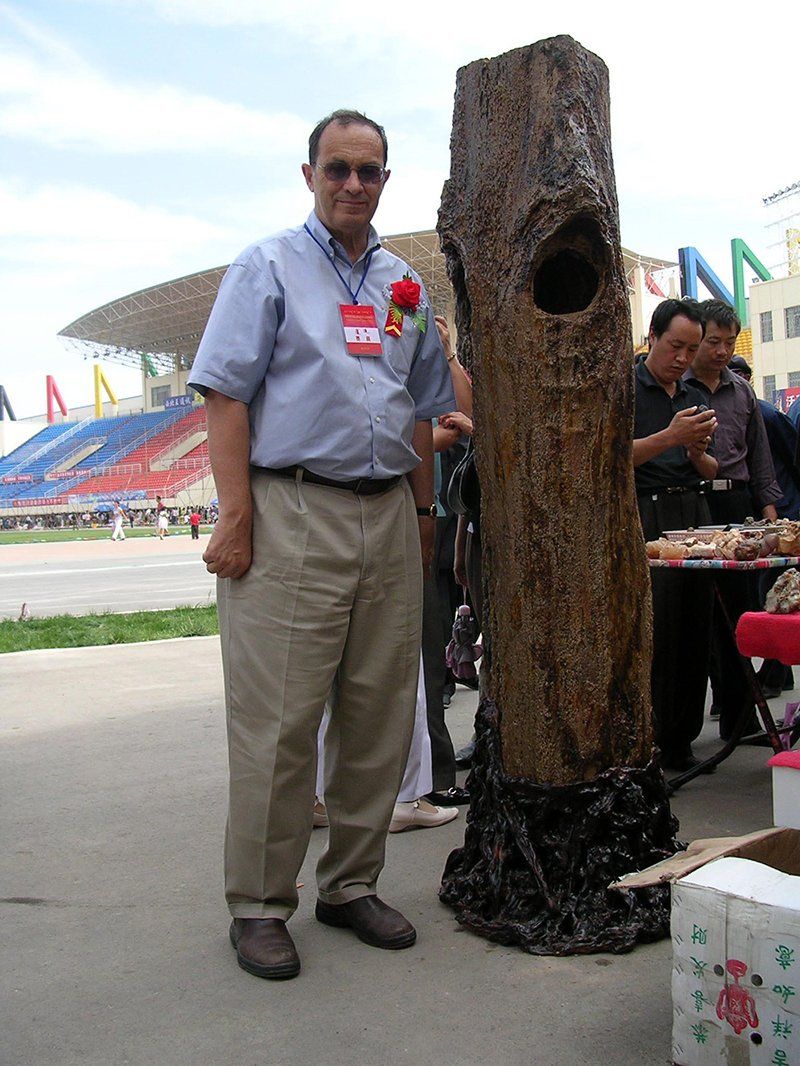Petrified Wood in ChinaPetrified wood used as viewing stones in China
By Thomas S. Elias, March, 2013
Petrified wood is one of the more easily recognized stone types encountered in Chinese stone appreciation. Large and small fragments have been collected and valued as ornamental stones for over 1,000 years and its use has been well documented. Since most petrified wood has been formed by minerals that have gradually turned to stone, having replaced all the tissue of former trees, it closely resembles in appearance those original tree parts.
Historical Aspects: Petrified wood was for many centuries believed to be the product of thunderstorms and particularly lighting striking trees. One of the earliest reference to petrified wood as a viewing stone is found in Du Wan’s Yulin Shipu or Stone Catalog of Cloudy Forest. This work, published in 1133 AD listed 114 stones appreciated for their natural beauty. The 48th entry was “pines transformed to stone (Song hua shi). The later and well known Suyuan Shipu or Suyuan Catalog written by Liu Youlin and published in 1613 also included petrified wood. Scholar studies of extant petrified wood displayed in Imperial gardens presents further evidence of its use as an ornamental stone in prior centuries. See David Ren’s excellent references on Chinese Imperial Rocks and Classical Chinese Rocks for illustrated example of petrified wood displayed during the Qing dynasty.
Origin: Petrified wood is found in various regions of China, although some of the largest and most impressive fragments occur in Xinjiang province. Large petrified tree trunks, some even with large roots and large branches have been used as garden elements. Examples can be seen at the National Stone Museum in Wuhan and at the Baocheng Museum in Tianjin near Beijing. Many tree trunks seen in stone markets have been cleaned and polished to highlight the colorful mineral contents. Smaller pieces of petrified wood are used indoors, invariably, in beautiful hand carved wood bases.
Features: The common fragments seen in markets are small upright stones developed from moderate to large branches. The rich colored chocolate brown or other darker colors are favored by stone collectors over lighter colors. Fragment with remnants of side branches make more interesting specimens as well as pieces with twisted mineral deposits in the stone. Degraded wood that has lost some of its original form before being transformed into stone also make striking specimens. Other than polishing, most petrified wood fragments seen in markets are completely natural. Attractive surface textures and patterns are important.
Large section of stone resembling tree trunks are often displayed outdoor on stone pedestals. The base must be strong and heavy to adequately support the petrified wood. Smaller pieces, while typically displayed in wood bases, can also be displayed in antique bronze or metal bowls with small pebbles to hold the petrified stone in place. This is more typical of the way in which petrified wood was displayed in the dynasties.
Petrified wood in attractive bases are moderately priced in Chinese markets. Thus, it is possible to obtain nice specimens for as reasonable cost. The weight of these stones should be taken into consideration as petrified wood is heavy!
Although there is a law in China prohibiting the export of fossil, small pieces of petrified wood are frequently sold and taken abroard by visitors. Fossils, especially dinosaur eggs and animal fossils are carefully monitored and should never be taken out of China. Penalties for violating Chinese law can be severe.
Reference in Chinese: Liu, 2007, p. 252-255; Ren 2000, plates 27 & 59.
References in English: Hu, 2002, p. 90, 92; Mowry 1997, p.278-280.


